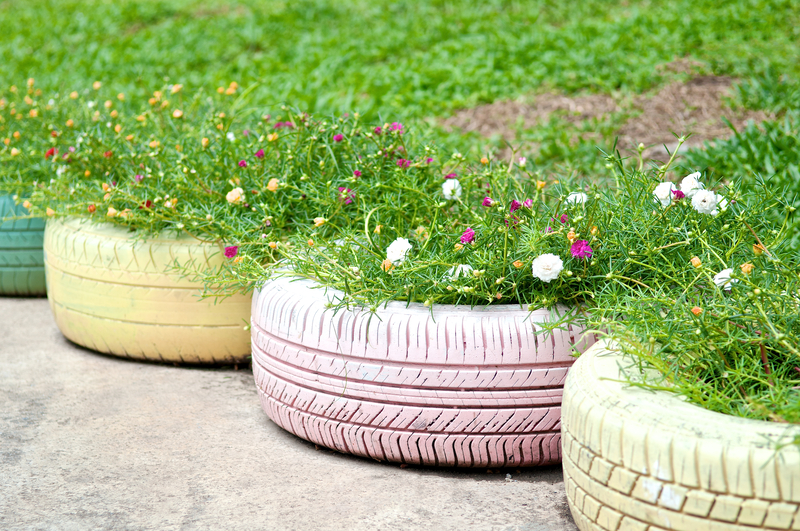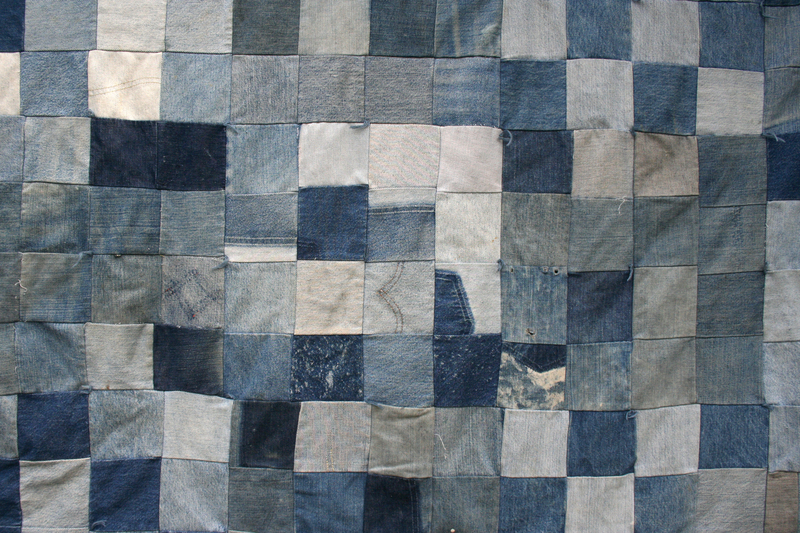How to Protect Wildlife by Properly Disposing of PPE Waste
The global COVID-19 pandemic saw an unprecedented surge in the usage of personal protective equipment (PPE), including masks, gloves, and face shields. While this gear has been vital for safeguarding human health, its improper disposal is creating a growing environmental crisis--one that endangers both terrestrial and marine wildlife. Understanding how to protect wildlife by properly disposing of PPE waste is essential for adopting responsible habits that safeguard our planet's biodiversity. In this comprehensive guide, we explore the impacts of PPE pollution, recommended disposal techniques, and actionable steps individuals and communities can take to secure a healthier ecosystem for all living beings.
Why PPE Waste Threatens Wildlife
The increasing use of masks, gloves, gowns, and other single-use protective gear has spawned a new kind of pollution. Much of this PPE ends up in landfills, waterways, and other natural habitats, often outside of regulated waste streams. The consequences are severe:
- Entanglement: Wildlife, from birds to marine animals, often become entangled in mask ear loops or glove fingers, risking injury, strangulation, or even death.
- Ingestion: Mistaken for food, pieces of PPE can be ingested by animals. This blocks digestive tracts, reduces nutrient absorption, or introduces toxins, frequently with fatal results.
- Ecosystem Disruption: Non-biodegradable PPE litter compromises soil quality, affects natural water filtration, and even disrupts the breeding habits of sensitive species.
Proper management of single-use PPE is no longer just a public health directive; it is a critical component in preserving our environment. By learning and implementing the best practices, everyone can contribute to protecting wildlife from the dangers posed by PPE waste.

Recognizing the Scale of PPE Pollution
It is estimated that more than 129 billion masks and 65 billion gloves were used globally every month at the height of the pandemic. If just 1% of these are improperly disposed of, millions of pieces enter the environment, with devastating effects.
- Oceans are at greatest risk: PPE waste often makes its way into rivers and oceans, where it endangers fish, sea turtles, dolphins, and seabirds.
- Land habitats are not immune: Forests, parks, and urban green spaces are increasingly littered by disposable PPE, threatening terrestrial species.
Controlling PPE pollution is essential to safeguarding biodiversity. It demands both individual responsibility and community-wide cooperation.
How Does PPE Waste Impact Wildlife?
Physical Hazards
- Entanglement Risks - Animals may become trapped in mask loops or snagged by gloves, leading to mobility restrictions, injury, or even suffocation.
- Ingestion Dangers - Small fragments of masks and gloves break down into microplastics, which are mistakenly consumed by animals, causing internal injury or starvation.
Chemical Pollution
- PPE materials often contain plastics, synthetic fibers, and additives. Over time, these leach into soil and water, introducing harmful substances into the food chain.
Ecosystem Changes
- Accumulated PPE can alter habitat structure, making it inhospitable for certain species and fostering invasive organisms that further destabilize ecosystems.
The evidence is clear: Unmanaged PPE waste poses serious risks to wildlife health, biodiversity, and even human food security.
Best Practices: How to Properly Dispose of PPE Waste
Optimizing the disposal of PPE is crucial in mitigating environmental damage. Below are tried-and-tested steps for responsibly disposing of PPE waste to safeguard wildlife:
1. Never Litter or Flush PPE
- Do not throw used masks or gloves on the ground. Wind and rain quickly carry these items into drains, rivers, and, ultimately, the sea.
- Never flush PPE down toilets. Sewer systems are incapable of processing these materials, which leads to blockages and environmental discharge.
2. Secure PPE Before Disposing
- When removing PPE, avoid shaking or snapping to reduce any release of contaminants.
- Cut mask ear loops and glove fingers before discarding to minimize risks of entanglement for wildlife.
- Place PPE in a dedicated, tightly sealed bag before discarding in the trash to prevent accidental dispersal.
3. Use Designated Collection Points
- Many communities and organizations now provide specially marked PPE disposal bins in public areas. Make use of these whenever possible.
- Avoid overfilling bins, which can cause spillage and dispersal by wind or scavenger animals.
4. Promote Community Awareness
- Share knowledge with family and friends about the proper disposal of PPE and its impact on wildlife.
- Encourage local businesses and schools to set up clear signage and educational campaigns to reinforce responsible behavior.
5. Consider Reusable Alternatives
- Where feasible, opt for washable, reusable masks made from environmentally friendly materials. This approach significantly reduces overall PPE waste generation.
The Role of Government and Industry in PPE Waste Management
While individual actions are vital, systemic solutions are also needed to stem the tide of PPE pollution.
Government Initiatives
- Public education campaigns to inform about correct PPE disposal and its environmental impact.
- Provision of PPE-specific waste bins in high-traffic areas like hospitals, transport stations, and parks.
- Investment in waste-to-energy and recycling technologies suitable for PPE materials.
- Regulations that require manufacturers to design more sustainable, easily degradable PPE products.
Industry Responsibilities
- Eco-design: Companies can develop PPE using biodegradable or recyclable materials, reducing persistence in the environment.
- Take-back programs: Manufacturers can set up systems for collecting and safely disposing of used PPE from consumers.
- Corporate social responsibility: Supporting community clean-up efforts and wildlife protection initiatives.
Innovative Solutions: Turning PPE Waste into Opportunities
With mounting urgency, scientists and entrepreneurs are exploring creative ways to convert PPE waste into valuable resources:
- Recycling Ventures: Some recycling facilities now accept certain PPE types, using specialized processes to break down and remanufacture the materials.
- Road Construction: Researchers in several countries have successfully incorporated shredded masks and gloves into asphalt, increasing road durability while reducing landfill burden.
- Energy Recovery: Pyrolysis and gasification technologies can convert PPE plastics into usable fuel or energy, offsetting fossil fuel use.
- Art and Awareness Campaigns: Artists worldwide have collected discarded PPE to create impactful installations, raising public consciousness about pollution's dangers.
Actionable Tips to Get Involved and Protect Wildlife
Every individual can make a tangible difference. Here's how you can take action now to protect wildlife from PPE waste and help prevent future harm:
- Volunteer for Clean-up Drives: Participating in local clean-up events removes hazardous PPE waste from parks, beaches, and waterways.
- Educate Others: Spread awareness among your network about the right way to dispose of masks and gloves.
- Document and Report Polluted Areas: Use mobile apps or community forums to register spots with PPE litter and encourage local authorities to respond.
- Advocate for Policy Change: Support legislation promoting sustainable PPE design and robust waste management systems.
- Adopt a Zero-Litter Pledge: Make it a personal goal to never dispose of PPE irresponsibly, and encourage others to do the same.

The Future of PPE and Wildlife Protection
As the world adjusts to new health protocols, PPE will likely continue to be part of daily life in hospitals and public spaces. Thus, the importance of proper PPE waste management to protect wildlife and ecosystems will only grow.
- Manufacturers are innovating new materials that biodegrade safely, posing less risk to animals and environments.
- Waste handling infrastructure is being upgraded to address the unique challenges of PPE collection and processing.
- Educational programs targeting schools, workplaces, and communities are ensuring a new generation understands the vital link between personal safety and planetary health.
Conclusion: Your Role in Defending Wildlife from PPE Pollution
Proper disposal of PPE waste is a simple, yet powerful, way to protect wildlife. Every mask, glove, or face shield disposed of responsibly can be a life saved, a habitat preserved, and a step towards environmental balance. Whenever you use PPE, remember the journey it takes after use--your actions can prevent it from becoming deadly litter in nature.
By embracing smart disposal practices, advocating for better systems, and choosing eco-friendly alternatives, you can join the movement to protect precious wildlife and ensure cleaner, safer habitats for generations to come.
Protect, Preserve, and Inspire
The next time you dispose of a mask or glove, do so with intention. The right decision, taken daily and shared widely, shields both human health and the remarkable diversity of life with which we share this planet.
Together, we can build a future where PPE saves lives without costing the Earth.